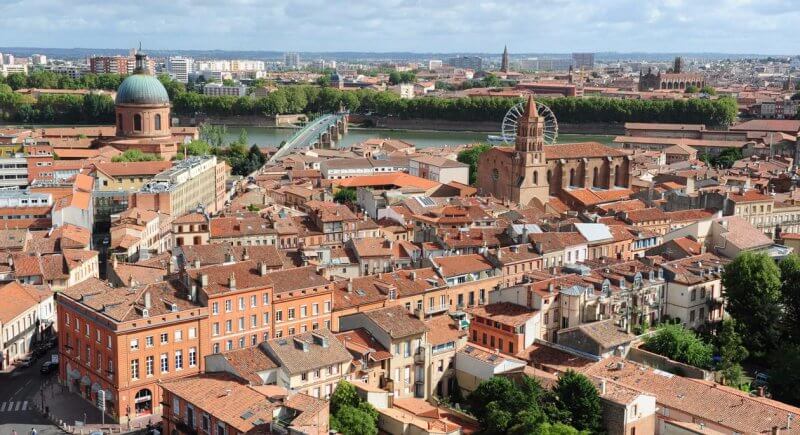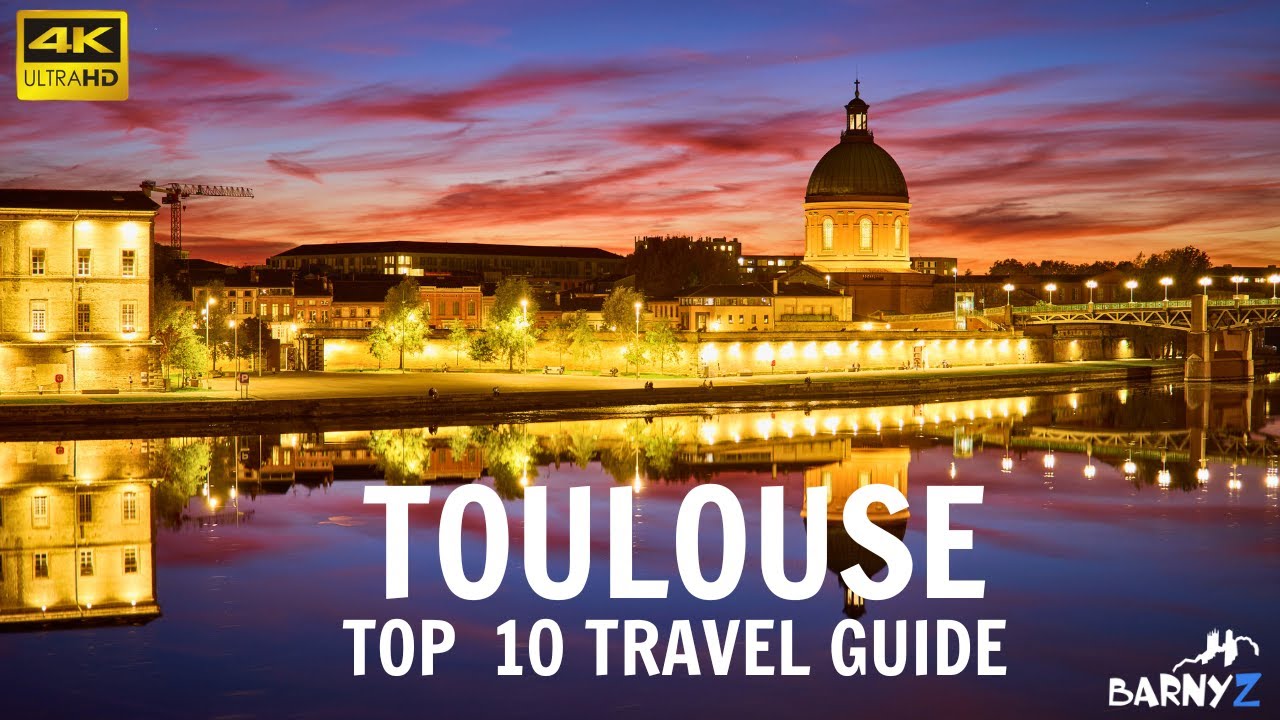Toulouse (France) is a stylish, colorful, and mysterious city of contrasts. Here, old winding streets, once walked by Roman legionnaires, coexist harmoniously with the largest Space Research Center in Europe. Walking through Toulouse, you can never guess who will meet you around the next corner – a troubadour or a superhero astronaut.
A Brief Overview
Toulouse is a large port in the southern part of France, spread along the banks of the Garonne River. It is in Toulouse that the Languedoc and Garonne canals meet, thus connecting the Atlantic Ocean with the Mediterranean Sea.
This city is the fourth largest in the country, with nearly 475,000 people living on its 118 km² territory. The Jewish community of Toulouse is the fourth largest in France, numbering about 30,000 people. In the 1930s, the policies of dictator Franco led to a large number of Spaniards moving to Toulouse – now there are about 25,000 of them here. Almost 12% of the entire population of Toulouse are natives of Arab countries.
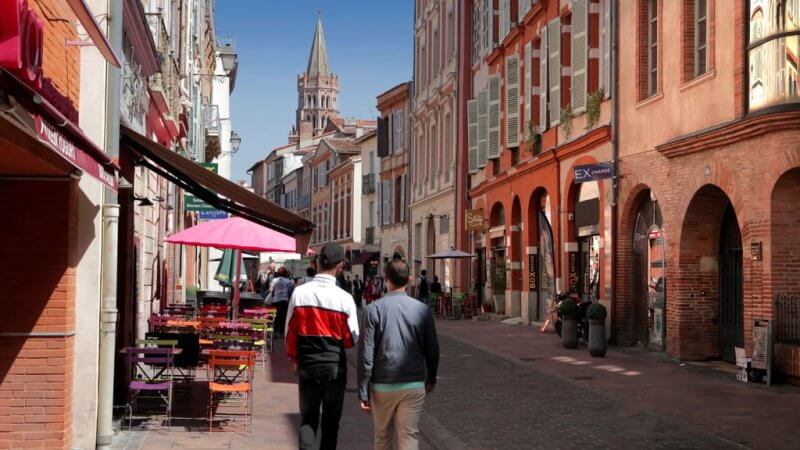
Toulouse is a southern city with incredibly comfortable climatic conditions. Winters in this area are mild and humid, with air temperatures usually ranging from +8 to +11°C. In summer, even during the hottest times, the air rarely warms up above +26°C. However, late autumn often brings cold rain.
The symbol of Toulouse is the violet, and every year in February, the city hosts the Violet Festival. This celebration lasts only two days, but its “trail” can still be seen for a long time in all local shops, cafes, and restaurants. Every year, travelers take tons of “violet” souvenirs from Toulouse: soap, lotions, marmalade, candied flowers.
Historical Facts
Toulouse is built on the site where there was a Roman settlement in ancient times. Nowadays, the alleys and boulevards of Toulouse in the historical part of the city follow the outlines of ancient streets, and many modern houses were specially built from red bricks and maintained in a pseudo-Romanesque style. Thanks to such massive constructions, Toulouse earned the romantic name “pink city.”
Under the rays of the rising and setting sun, red brick houses acquire a truly fantastic appearance, and at this time, the most luxurious photos of the historic center are taken.
Thanks to the production and sale of woad extract, Toulouse was the richest and most prosperous city in all of France during the Middle Ages. As a memory of this period, the city retained original buildings of elegant architecture: mansions, hotels, estates. Over time, the Portuguese began supplying indigo to Europe, and Toulouse’s monopoly in the dyeing industry ended.
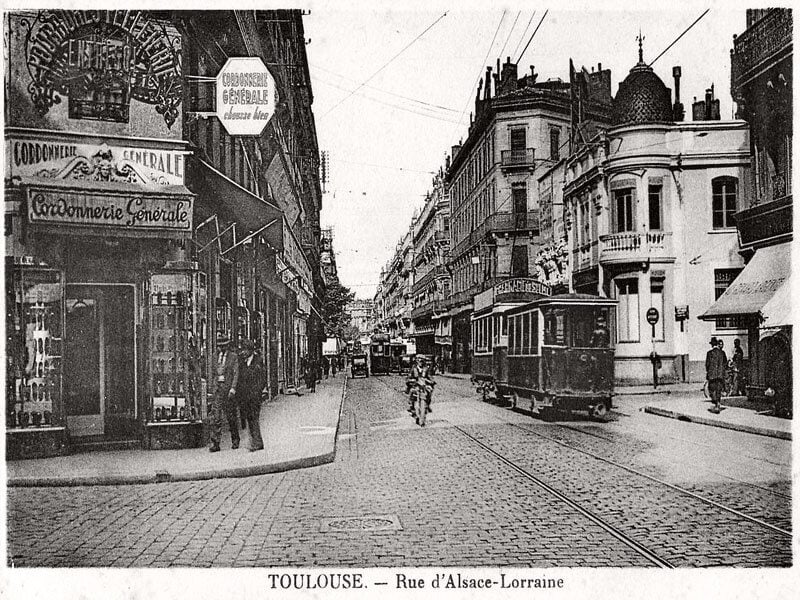
In the second half of the 20th century, Toulouse became the center of French aviation. Now more than 35,000 local residents are employed in the space industry, and Airbus is recognized as the largest employer in the region.
Sights of Toulouse
Toulouse is a multifaceted and diverse city with many attractions. Travelers come here to see well-preserved Renaissance architecture, visit ancient Catholic churches and interesting museums, and walk through picturesque parks. This selection lists all the “must-see” attractions in Toulouse.
Fans of Antoine de Saint-Exupéry come to Toulouse as if to a Mecca. It was from this city that the brave pilot set off on his first flights over Africa and the Atlantic.
Capitol Square and the Capitol
The Capitol and the square on which it stands are usually the first attractions in Toulouse that tourists are introduced to.
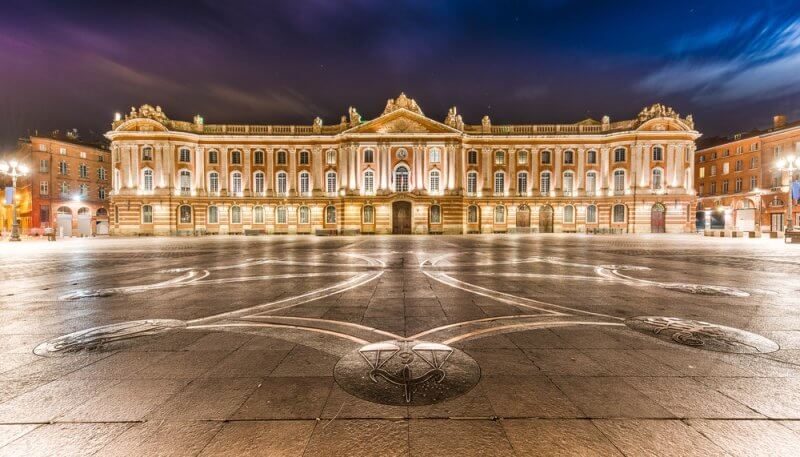
Place du Capitole was formed during the early Middle Ages, and in the 1990s, it was reconstructed and turned into an extensive pedestrian zone. The square has an original tiled cover: a huge Toulouse cross with zodiac symbols is laid out in its center.
On Place du Capitole, there is an electric car parking lot. This transport is perfect for quickly, comfortably, and inexpensively exploring all the most interesting city attractions.
On Place du Capitole, there is a majestic building with a facade adorned with 8 pink marble columns. This is the Capitole, the city hall. It was built in 1190 and acquired its modern appearance in 1750.
Now the city hall and opera house are located in the Capitol, and some halls are open to tourists. The interior contains many elements of the 16th-19th centuries, particularly old wall paintings.
Entrance to the Capitol is free.
Visiting is possible any day of the week from 10:00 to 18:45.
Address of the Capitol: Place du Capitole 31000 Toulouse, France.
Behind the Capitol is a tourist center where you can get a free city map and information about all the attractions.
Basilica of Saint-Sernin
Another popular local attraction is the ancient Basilica of Saint-Sernin, located on Place Saint-Sernin. This beautiful building, listed as a UNESCO heritage site, is featured on almost all promotional brochures and photos of Toulouse and France.
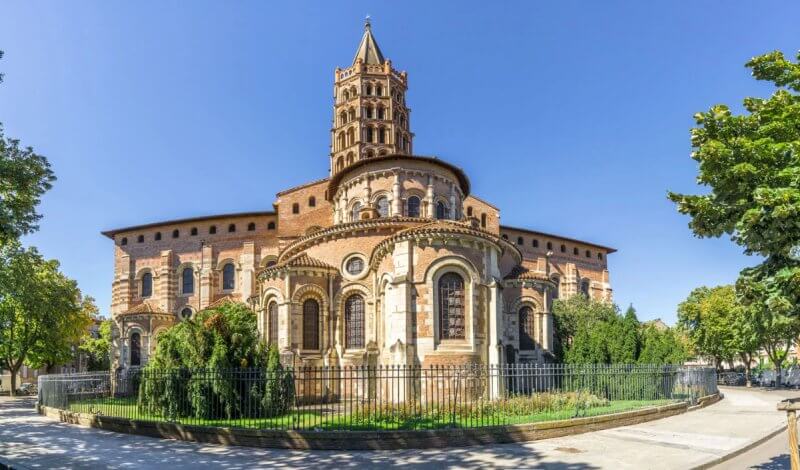
The huge Basilica of Saint-Sernin is one of the preserved buildings of the abbey of the same name, which appeared on the Way of Saint James in the 11th-13th centuries. Built from the traditional red bricks of Toulouse, it attracts attention with its original Romanesque facade, carved stone portals with well-preserved sculptures, beautiful 12th-century frescoes, 11th-century marble reliefs, an old organ, and a carillon with 18 bells, as well as a crypt with particularly valuable religious relics – a thorn from the crown of thorns of Jesus and the relics of 128 Christian saints.
You can visit the Basilica of Saint-Sernin from 8:30 to 18:00 on weekdays, and on Sunday from 8:30 to 19:00.
Entrance is free.
Address of the attraction: Pl. Saint-Sernin, 31000 Toulouse, France.
On Sundays, a flea market unfolds next to the Basilica of Saint-Sernin, where you can buy original vintage items with the symbolism of Toulouse.
Japanese Garden
Toulouse has many beautiful parks, but only the Japanese Garden, also known as the Pierre Baudis Japanese Garden, is considered an attraction. It is located in the northern part of the city, in the Compans-Caffarelli area, between the “Canal du Midi” and “Compans Caffarelli” metro stops.
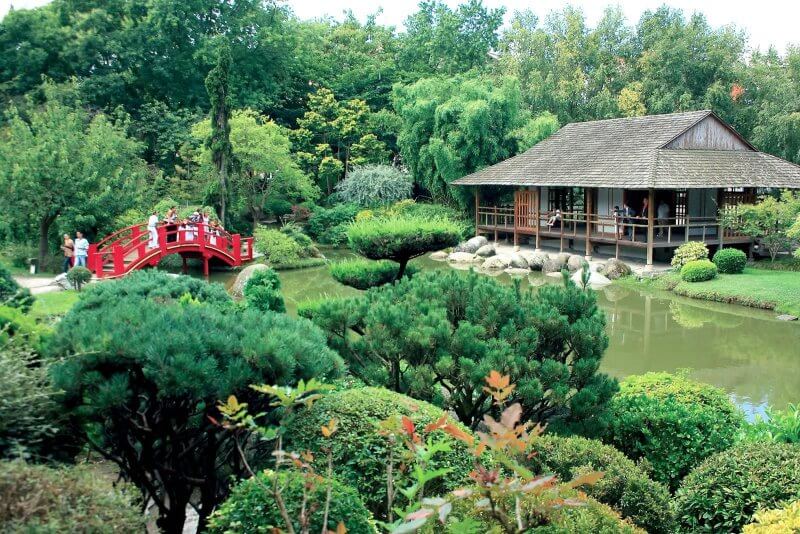
This green oasis occupies an area of 7,000 m². Visitors can enjoy a bamboo grove, a rock garden, exotic plants, the perpetual chirping of birds, and ponds with huge carp that love bread.
The Japanese Garden is open daily from 8:00 to 21:00.
Entrance is free.
Address of the attraction: Jardin Compans Caffarelli, Boulevard Lascrosses, 31000 Toulouse, France.
Jacobin Monastery
In the historical center, on the way from the Capitol to the Garonne River, there is a complex of abbey buildings that belonged to the Dominican Order of Jacobins in the Middle Ages.
Now these structures are an example of Languedoc Gothic style from the 13th-14th centuries.
The bell tower of the monastery church attracts attention – externally it resembles the tower of the Basilica of Saint-Sernin and reaches a height of 45 meters.
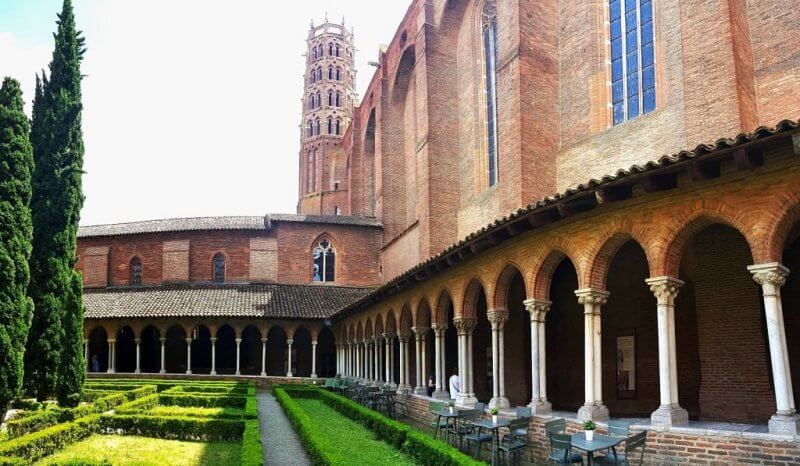
Inside the church, there is a majestic colonnade of gray marble, topped with capitals with floral patterns. The complex vault structure rests on a massive column 28 meters high – it is known as the “palm of the Jacobins.” The walls are covered with rich paintings depicting Occitan crosses.
Inside the church, there is also a unique religious attraction – a mausoleum made of multicolored marble with gilded decorations and many statues. In the mausoleum (17th century), there is a tomb with the relics of Saint Thomas Aquinas.
In the eastern part of the abbey is the largest dining hall of the Middle Ages – a building 17 meters high, which now regularly hosts exhibitions.
You can visit the attraction any day except Monday from 10:00 to 18:00.
Entrance to the church is free, but viewing the cloister costs €5.
Address: Parvis des Jacobins, 3100 Toulouse, France.
Website: toulouse.fr
Museum of Natural History
The Toulouse Museum of Natural History, operating since 1976, is also known as the Museum of Natural History.
The museum’s exhibition currently includes 19 halls with a total area of 6,000 m², housing more than 2.5 million exhibits.
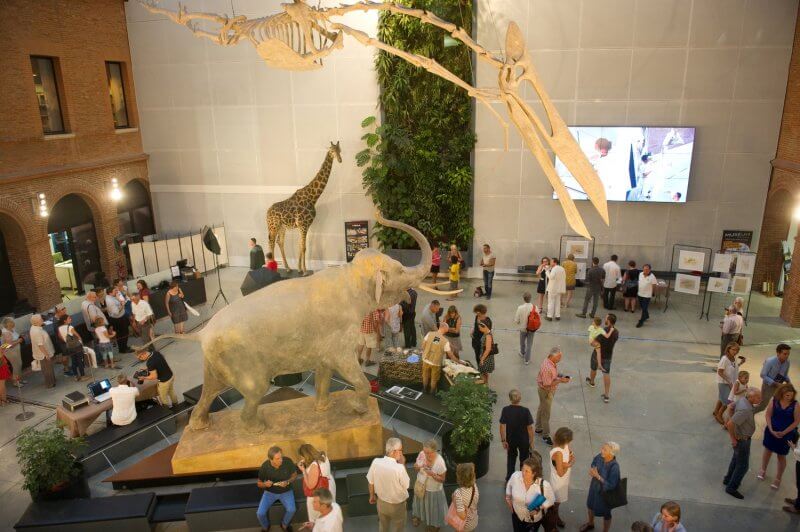
Permanent exhibitions include 5 unique collections that tell about the Solar System, the prehistoric past of our planet and the evolution of life on it, the main functions of all living beings, and the impact of humanity on Earth’s ecology. The museum is adjacent to a luxurious botanical garden.
The museum is open from 10:00 to 18:00, with a break from 12:30 to 14:00. Closed on Mondays.
Entrance is paid. Ticket prices vary depending on the number of exhibitions visited. Current prices are available on the museum’s official website.
Website: museum.toulouse.fr
Address of the attraction: 35 All. Jules Guesde, 31000 Toulouse, France.
The Toulouse Museum of Natural History is the first museum in the world to open a prehistoric department.
“New Bridge”
Spanning the Garonne River, Pont Neuf connects two squares of the beautiful French city: Esquirol and Digeon. Despite its name, it is the oldest among Toulouse’s bridges, as it was built between 1541 and 1632.
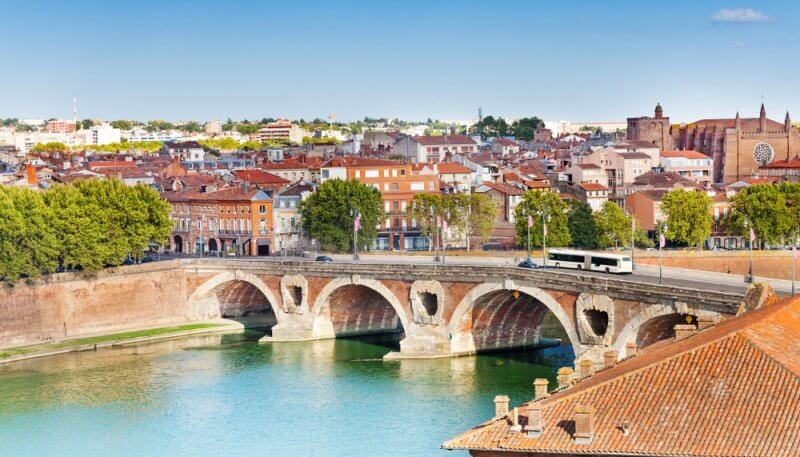
The New Bridge is 220 meters long, has 6 supports and 7 arches, and has a very unusual design. To help the bridge withstand the frequent and turbulent floods of the Garonne, each of its supports has special holes for water drainage. Each support is also equipped with crests that act as wave breakers.
If you look closely, you can spot a small bright red sculpture of an earless humanoid creature in one of the round holes.
You can reach the attraction on foot from the Saint-Cyprien-Republique or Esquirol metro stations, or by car from the eastern city bank to the western.
Space City
One of the most interesting attractions of Toulouse and France is Space City, built near the CST space center. It is something between a pre-flight training center and a space technology museum.
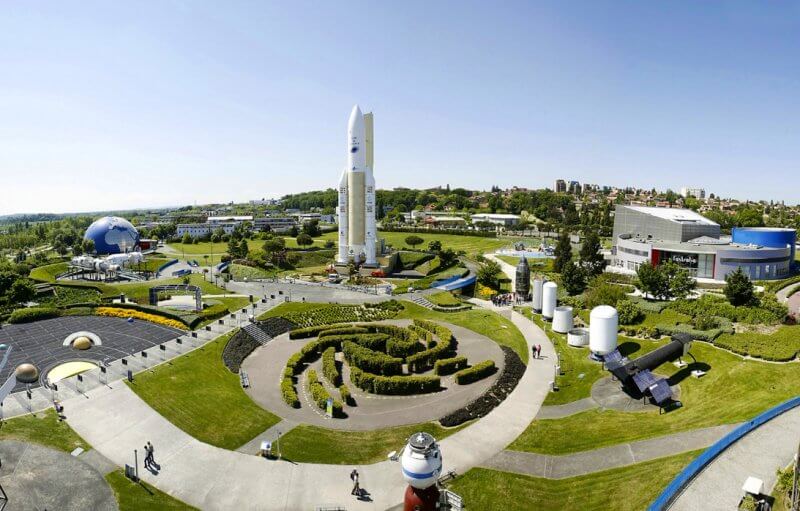
This theme park has several exhibition pavilions with various installations and simulators. There is also a cinema, 2 planetariums, and attractions.
Visitors to Space City can visit the inside of a space rocket or station, sit in astronaut chairs, feel the force of gravity, enjoy astronaut food straight from tubes, examine lunar rocks through a microscope, and watch a 3D movie about the famous Hubble telescope. The youngest guests will find a playground with interesting attractions and fascinating space-themed installations.
Space City is visited by more than 4 million guests annually.
Space City operates on a rather complex schedule, so it is best to check the current timetable on the official website.
Admission for children under 5 is free. Ticket prices for other visitors range from €16 to €38, depending on age and season.
The attraction is located in the eastern suburb of Toulouse, the exact address: Avenue Jean Gonord, 3150 Toulouse, France. You can get there from the city center by metro (Jolimont station) or bus No. 37.
Official website: cite-espace.com.
In 1874, employees of the Toulouse Observatory discovered a new asteroid, which was named after the city of Toulouse.
Where to Stay
The territory of Toulouse is divided into 6 districts. The most attractive and safe for tourists are the historic center, the northern district, and the Marengo-Jolimont district.
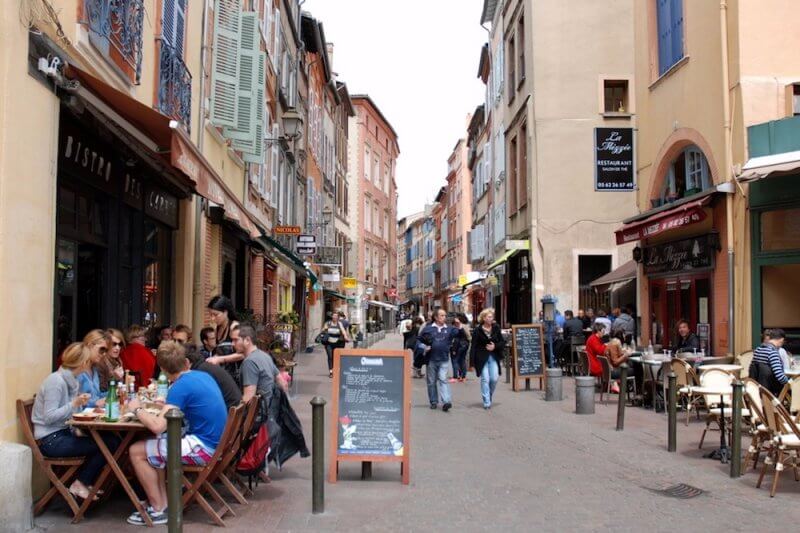
The historic center of the city is home to most of the architectural attractions and museums, as well as many popular clubs and bars, bohemian restaurants, and cafes. However, there are no green spaces or parks where you can walk or relax with children.
The northern district is much quieter than its bustling neighbor. Experienced travelers love to stay here. This part of the city houses the Grand Rond public park, the Botanical and Royal gardens – all these green areas are connected by bridges.
For tourists visiting Toulouse with children, the Marengo-Jolimont district is ideal for accommodation. A beautiful promenade, playgrounds, a spacious rope park, and numerous parks with ponds where you can go boating – all this is available to the guests of the city.
The ideal option for accommodation in any district of Toulouse is near a metro station, making it convenient to travel around the city. The Toulouse metro was built relatively recently (2007), is fully automated, and all its stations are adapted for wheelchairs and strollers.
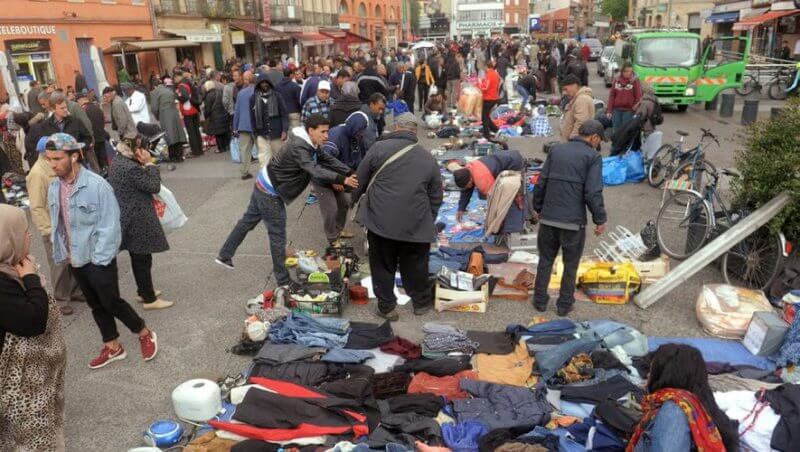
Although Toulouse, like most French cities, is quite safe, tourists are not advised to stay in the southern part of the city – these are the residential areas of Mirail, Empalot, Bellefontaine. It’s also better not to stay in Arnaud Bernard and La Reynerie, where many Arabs live.
There are more than 700 accommodation options for tourists visiting this popular French city. These can be hotels of varying star ratings or rental apartments.
A double room in a 3-star hotel can be rented for €55-125 per night, and in a 5-star hotel for €150-270. You can stay in an apartment for one night for an average of €50-85.
How to Get There
While in France, getting to Toulouse is not difficult. Six kilometers from Toulouse is Blagnac International Airport, which receives flights from many French cities. In addition, you can get to the city by bus or train. Toulouse has excellent transport links with Paris, Marseille, Bordeaux, and Barcelona.
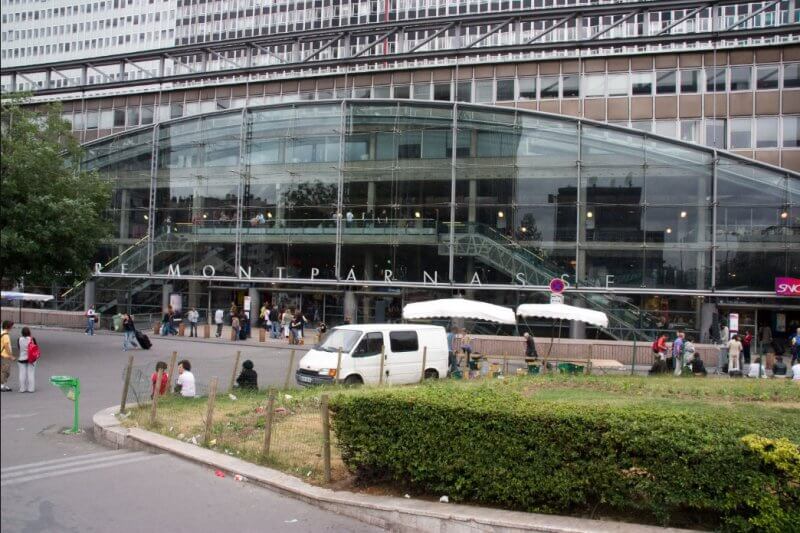
Montparnasse is the largest train station in the French capital. It is from there that TGV inOui trains depart for Toulouse. There are usually flights at intervals of 2.5-3.5 hours, but on weekends and holidays, there may be changes in the schedule. You can reach Toulouse by high-speed train in 5 hours, and by regular train in 7.5 hours. Ticket prices range from €90-170. In Toulouse, trains arrive at Gare de Toulouse Matabiau, located in the city center.
There are also direct bus services from Paris to Toulouse. Blablabus company buses depart from Paris City Centre – Bercy Seine station. Departures occur every 2-4 hours, and the trip lasts almost 9 hours. Tickets cost €19-40.
You can buy train and bus tickets at the terminal at the station just before departure.
Conclusion
This article contains a lot of useful information that will allow you to organize a comfortable and interesting trip. You can walk, explore the sights, observe the locals, and literally immerse yourself in the life of the city. But still, leave some secrets of this beautiful city undiscovered so that you have a reason to come here again – Toulouse, France definitely deserves it.
Montpellier: The Perfect Mix of Provincial Charm and Glamour

